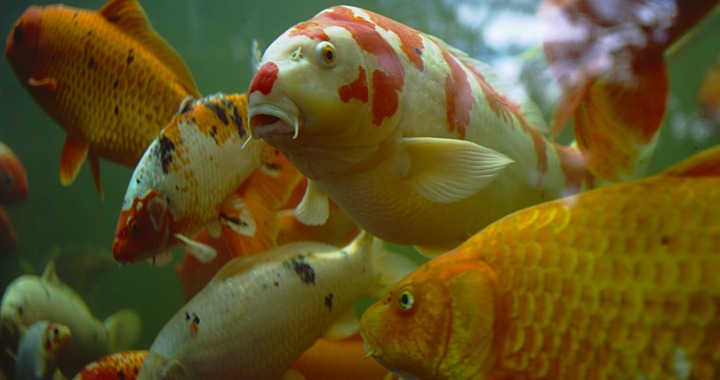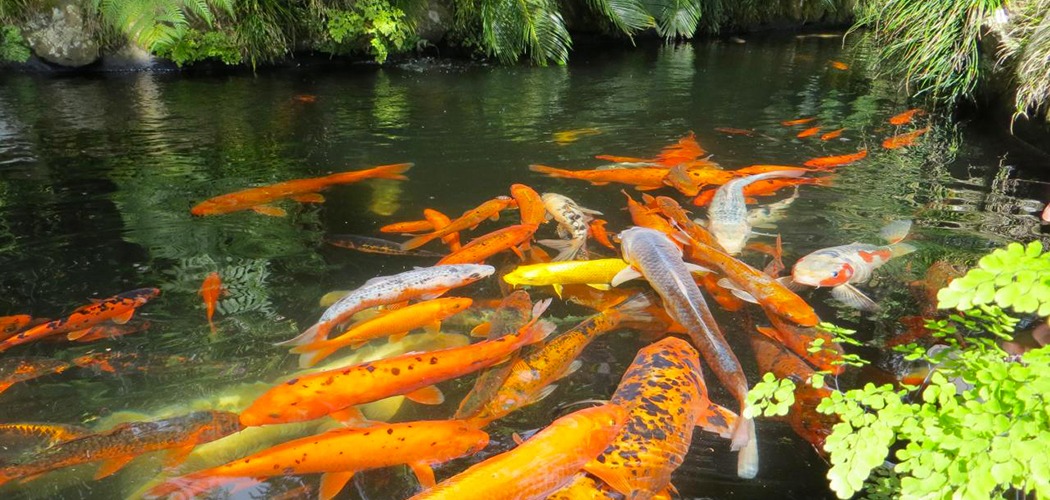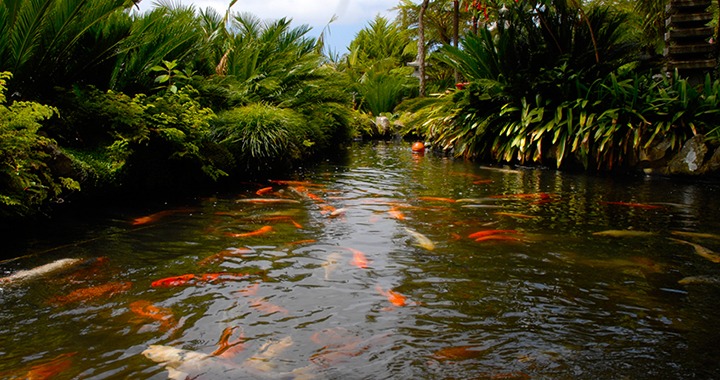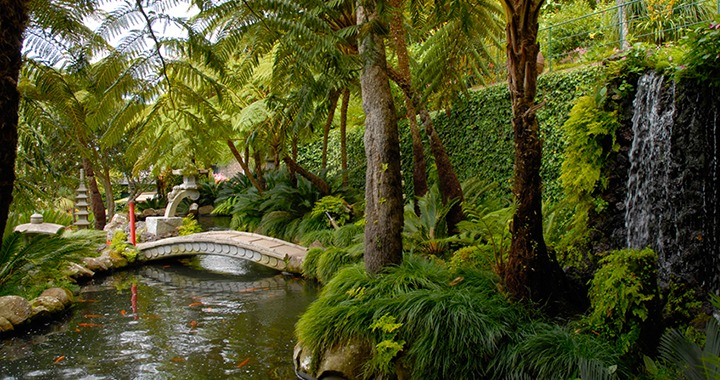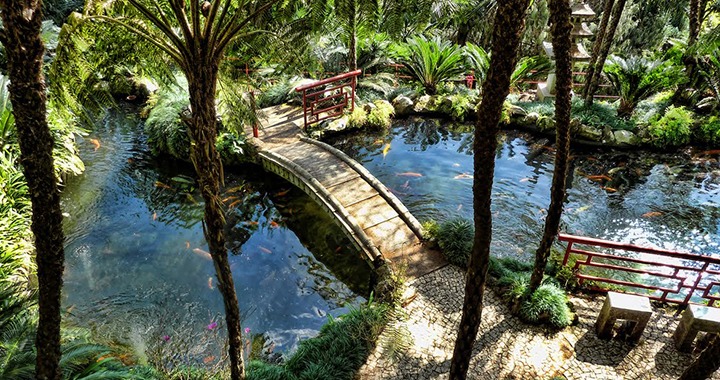Koi Fish
One of the greatest curiosities of this garden is the existence of Koi fishes in some of the lakes. Descending from the black fish known as Magoi, it is a carp known as Cyprinus carpio. These fish originally came from East Asia, mainly from China and were introduced into Japan during the Chinese invasion, in 200 BC, at which time their colours were limited to red and grey.
In the 17th century the carps were introduced into the irrigation channels of Yamakoshi, in the poor region of Niigata in Japan, to supplement the “rice-growers” diet. Since then Koi have come a long way with the help of dedicated breeders and enthusiasts. Many species of various colours and sizes can be found in the garden lakes.
The Monte Palace Madeira garden had to follow a certain number of rules to allow the Koi to flourish. No areas of stagnant water are allowed within the layout of the Lakes. A modern filtration system was also built to ensure the survival of these friendly, docile fish which can live up to 100 years. The filtering system is composed of three elements, between them are porcelain rings, effecting the biological purification of the water using biodynamic mechanisms, thus dispensing with the use of chemical products.
The diet of these animals is made up of lettuce, prawns, wholemeal bread and floating rations rich in vitamins, mineral salts, proteins, carbohydrates and some glycosides, especially intended for their development or their pigmentation.
Branches of cedar-wood are placed where the female lays her eggs in these lakes. The eggs stick to the branches and are protected from the hungry mouths of other fish. The cedar-wood is then taken away to another lake without any fish. This phenomenon was found to have happened occasionally, when a branch of cedar-wood fell into the lake and days later was found covered with eggs.


